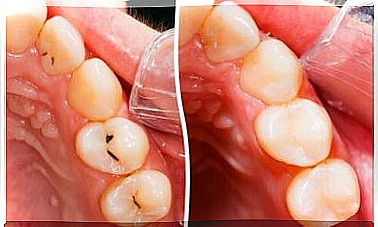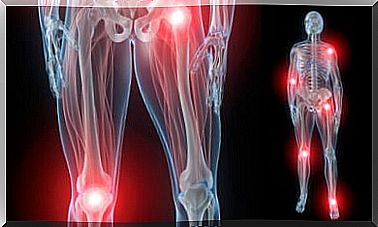Acitretin: Indications And Uses
Acitretin is used to treat problems with keratinized or flaky skin. Find out more about its uses and side effects!

Acitretin is a drug that belongs to the group of retinoids or vitamin A derivatives. It is used to treat skin problems where the skin is keratinized and can look flaky.
This drug inhibits the overgrowth of cells and the keratinization of the skin. During keratinization, the skin cells thicken as proteins are deposited on them.
What is acitretin used for?

Acitretin is used to treat severe, common skin conditions. One such widespread disease is psoriasis.
This medicine is also used to treat ichthyosis, a skin condition in which keratin builds up in cells and keratinizes them, such as the nails and hair.
This medication should always be prescribed by a doctor, preferably a dermatologist . Dermatologists in particular are more experienced in treating systemic retinoids.
How do you take it?
It is best to take this medicine with food or milk. The dose is different for each patient. The guidelines prescribed by the doctor must be followed.
For adults and the elderly, the usual starting dose is 25 mg or 30 mg once a day. However, the doctor may change the dose after 2 to 4 weeks depending on the effect on the patient.
However, the maximum dose is 75 mg daily and the maximum duration of treatment is three months. However, it can be extended if the expert deems it necessary.
If you forget your daily dose, don’t make it up. But take them as soon as possible, unless there is not much missing until the next one, then let it stay. You must not interrupt the treatment on your own; always consult your doctor beforehand.
Side effects

Like all drugs, acitretin can cause side effects. Usually they depend on the dose. The higher the daily dose, the greater the risk of side effects.
Most side effects occur at the beginning of treatment and are reversible if the dose is changed or interrupted.
The most common side effects include dry skin, dry mucous membranes, and dry lips. In addition, other undesirable effects may occur, such as:
- Changes in hair growth and texture
- Inflammation of the lining of the mouth and gums
- Blisters on the skin and cracks
- Changes in skin and hair color
- Visual disturbances such as dry eyes, blurred vision, poor night vision. Affected people may not tolerate contact lenses.
In other cases, there is also dry mucous membranes in the nose and dry, peeling skin. Dandruff can mainly occur on the palms of the hands and the soles of the feet.
A small percentage of people experience side effects such as nosebleeds or the appearance of flakes and thinning of healthy skin with increased sensitivity.
When long-term treatment with acitretin is completed, bone changes such as thinning of the bones or a decrease in bone density (osteoporosis) may occur.
When should acitretin not be used?
Acitretin should not be used in the following situations:
- Women who are pregnant or who may become pregnant during treatment or within the next 3 years
- Patients with liver, kidney or heart failure
- Allergy to acitretin or retinol derivatives
- Patients after treatment with tetracyclines
It is important to know and be aware that acitretin is highly teratogenic. This means that if a pregnant woman is being treated with this drug, it can lead to malformations in the fetus. Typical malformations caused by acitretin are:
- Damage to the central nervous system
- Heart and blood vessel problems
- Malformations of the skull, face and skeleton
- Problems in the thymus gland
The percentage of deformities is high, even if it is only taken for a short time during pregnancy. It also happens if pregnancy occurs within 3 years of stopping treatment.
conclusion
Acitretin should only be used in women under medical supervision and with particular caution. You must not take this medication if you are pregnant or plan to become pregnant within the next 3 years. It is a drug that causes significant deformities in the fetus.









